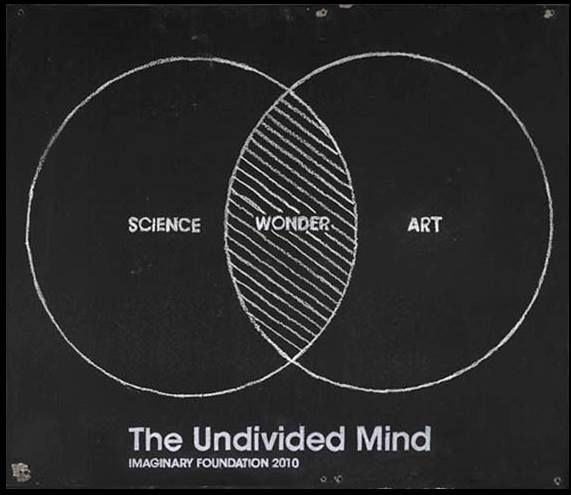Page 10916
May 12, 2016
DARPA News Update: To Build the First Space Shuttle Without A Pilot Known as the ‘Experimental Spaceplane’
Posted by Karen Hurst in categories: robotics/AI, space travel

https://youtube.com/watch?v=HMXKXzEz44c
Getting ready to send the robots to Space on an AI Spaceship; perfect for that trip to Mars, Jupiter, etc.
DARPA will soon build and relase their first space shuttle without a pilot.
May 12, 2016
Advisory Committee expresses Quantum, legacy system concerns
Posted by Karen Hurst in categories: military, privacy, quantum physics, security
NSA meets with Silicon Valley execs to voice their concerns over legacy systems being hacked by Quantum technology. Glad they’re talking about it because with the recent advancements in Quantum means it will be available in devices, communications, and platforms a lot sooner than originally projected.
The National Security Telecommunications Advisory Committee (NSTAC) brought together Silicon Valley executives with federal officials at the advisory committee’s annual meeting on Wednesday in Santa Clara, California.
U.S. military and intelligence officials, including Department of Defense Secretary Ash Carter, Department of Homeland Security Secretary Jeh Johnson, and Department of Commerce Secretary Penny Pritzker, attended the advisory committee.
Continue reading “Advisory Committee expresses Quantum, legacy system concerns” »
May 12, 2016
Help Crowdfund Senescent Cell Clearance as a Therapy for Aging at the Major Mouse Testing Program
Posted by Steve Hill in categories: biotech/medical, health, life extension
The community has the power to direct science and we no longer have to accept the traditional path of state funded science. We have the power to choose the direction science takes!
The cadence of SENS rejuvenation research fundraising this year will be a little different from that of past years. There will be more groups involved and more smaller initiatives running through existing crowdfunding sites for a start. The first of these fundraisers for 2016 has launched at crowdfunding site Lifespan.io, and is definitely worthy of our support. The Major Mouse Testing Program is a new non-profit group of researchers and advocates, who have spent the last six months making connections and laying the groundwork to run more animal studies of SENS-relevant prototype therapies focused on health and life span. This is an important gap in the longevity science community as it exists today: consider the painfully slow progress in organizing animal studies in senescent cell clearance over the past five years, for example. Given more enthusiasm and more funding, that could have happened a lot faster. Consider also that the research mainstream — such as the NIA Interventions Testing Program — carries out very few rigorous health and life span studies of potential interventions for aging in mice, and of those almost none are relevant to the SENS approach of damage repair, the only plausible path to radical life extension within our lifetimes.
Animal studies are vital; not just one or two, here or there, but a systematic approach to generating rigorous supporting data, establishing dosage, and uncovering unexpected outcomes. The Major Mouse Testing Program can do a great deal to fill this gap for our community, and has the potential to be an important supporting organization for the SENS Research Foundation, for startups working on SENS technologies such as Oisin Biotechnologies, and for labs involved in SENS research. The more diversity the better. The only thing that the Major Mouse Testing Program lacks today is the initial funding and support that we can provide to give them a good start on their plans for the future. With clever organization, a non-profit organization allied with established labs can carry out solid animal studies at a cost low enough for people like you and I to fund the work via fundraisers, and that is exactly what we should do.
May 12, 2016
Ideas are just as real as the neurons they inhabit
Posted by Shailesh Prasad in category: neuroscience
May 12, 2016
Estonia Offers Virtual Government E-Residency To Anyone
Posted by Karen Hurst in category: government
Are you tired of your poor selections for political leaders? Maybe you like a new type of government all together. If so, well do I have the story for you. It’s their e-Government as a Service.
If the United Arab Emirates has a minister for happiness (and it does), then why can’t a country have a CIO? Taavi Kotka sees no reason why not and he has been chief information officer for the Estonian government since 2013. Kotka is working to help the country attempt to achieve what it calls a ‘sustained march towards modernity’. The new Estonia wants to be a sort of ‘start-up nation’ with a new digital infrastructure to deliver public and private services.
But E-government (or eGovernment if you prefer) is nothing new, so what makes Estonia worth the E value and is it doing anything radically different?
Continue reading “Estonia Offers Virtual Government E-Residency To Anyone” »
May 12, 2016
From robotic hands to ‘gecko feet’, Pentagon’s DARPA research agency showcases future tech
Posted by Karen Hurst in categories: cyborgs, military, robotics/AI
Fun stuff.
Johnny Matheny’s handshake is friendly, confident and firm — though not in the bone-crushing manner favoured by some of the alpha types here in the Pentagon.
What is remarkable is that Matheny’s proffered hand is not actually his. It is part of a robotic prosthesis researchers hope one day could help transform the lives of countless amputees.
Defense Department scientists are working on a new, digital night vision and thermal device that’s smaller and lighter than the Army’s latest Enhanced Night Vision Goggle.
The PIXNET camera is designed to provide small combat units with a “helmet mounted shortwave and longwave infrared blended imager with wireless networking capability,” according to officials from the Defense Advanced Research Projects Agency at the May 11 DARPA Demo day at the Pentagon.
Currently, soldiers use the Enhanced Night Vision Goggle, or ENVG. The Army began fielding the first generation of the ENVG in 2009 and has since fielded a slightly improve version in the ENVG II.
Continue reading “DARPA Working on New Night Vision Device” »
May 12, 2016
Impossible research project? This federal agency wants to fund it
Posted by Karen Hurst in category: biotech/medical
IARPA has released its annual solicitation for projects on the absolute bleeding-edge of IT.
By Grayson Ullman.
May 12, 2016
Russell Smith: What’s behind our sudden fascination with immortality?
Posted by Karen Hurst in categories: biotech/medical, education, life extension, mobile phones, nanotechnology, particle physics, Ray Kurzweil, time travel
A documentary film just had its premiere at the Hot Docs festival in Toronto. How To Build A Time Machine, the work of filmmaker Jay Cheel, is a strange and incoherent little document of two middle-aged men with loosely related obsessions: One of them wants to build a perfect recreation of a movie prop – the machine from the 1960 movie The Time Machine, based on the H.G. Wells novel – and the other is a theoretical physicist who thinks he may have effected a kind of time travel in a lab, on a microscopic scale, using lasers that push particles around. The weak connection between the two men is that they both regret a death in their past – a best friend, a father – and are preoccupied with what they might have done to prevent the death; they both wonder if time travel to the past might have been a remedy for death itself. (Compared to the protagonist of Zero K who seeks immortality as a way of avoiding the loss of a loved one.) The 80s synthpop song Forever Young by Alphaville booms symbolically at one point.
Why this sudden ascendancy of yearning for immortality now? Is it simply because immortality of a medical sort might be imminent, a result of technological advances, such as nanobots, that will fight disease in our bloodstream? Or is it because, as Ray Kurzweil implies, digital technology is now so advanced that we have already left our bodies behind? We already live outside them, and our digital selves will outlive them. (“I mean,” says Kurzweil, “this little Android phone I’m carrying on my belt is not yet inside my physical body, but that’s an arbitrary distinction.”)
The frequently quoted axiom of Arthur C. Clarke – “Any sufficiently advanced technology is indistinguishable from magic” – is pertinent to this current fascination with life without end. We are now perceiving technology as not just magic but as god-like, as life-giving, as representing an entirely new plane of being.
Continue reading “Russell Smith: What’s behind our sudden fascination with immortality?” »

















